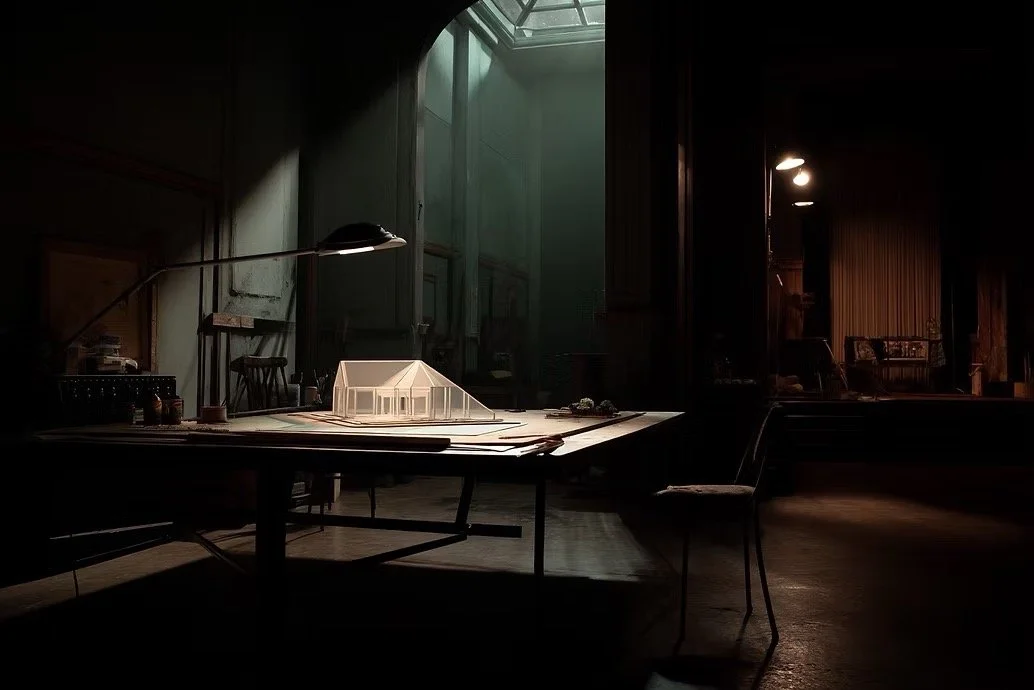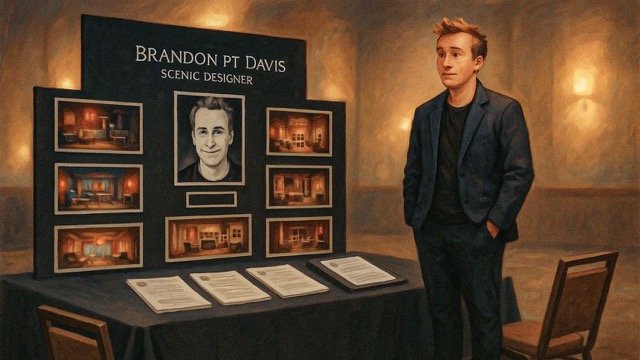Design Philosophy and Scenic Insights
These entries explore the evolving philosophy of scenic design — from artistic inspiration to ethical considerations in the rehearsal room. I reflect on what it means to be a scenic designer today and how storytelling, collaboration, and technology intersect in the process.
Starting out as a scenic designer can feel overwhelming—every detail revised, every choice questioned. But with time, revisions shrink, and the work begins to feel like your own. The quiet moment comes when the notes are small, and you finally recognize: this is your voice.
From the beginning, it was clear the scenic language needed to support a nonlinear dramaturgy. The play leaps between beach and cathedral, war zone and heaven. Characters slip between time and identity. Puppetry, projections, and movement required the space to transform without literalism.
At URTAs, I froze. A designer I admired asked how I’d change an old ground plan—and I blanked. His response stuck with me for years. But that moment taught me something far more valuable than any praise could have: the instinct to re-enter your work.
There's a portrait that watches over the Macklanburg Playhouse. If you've ever performed there, you've seen it—Maude Adams, eyes just over your shoulder as you step into the light. The original Peter Pan. A Broadway icon. But more than that: a pioneer in theatrical lighting and the former head of the drama department at Stephens College.
Scenic design is more than decoration—it’s a way of shaping space with authenticity and intention. Reflecting on my journey, I explore how theatre, technology, and education inform my creative philosophy, and why building meaningful environments matters in a landscape dominated by trends and algorithms.





